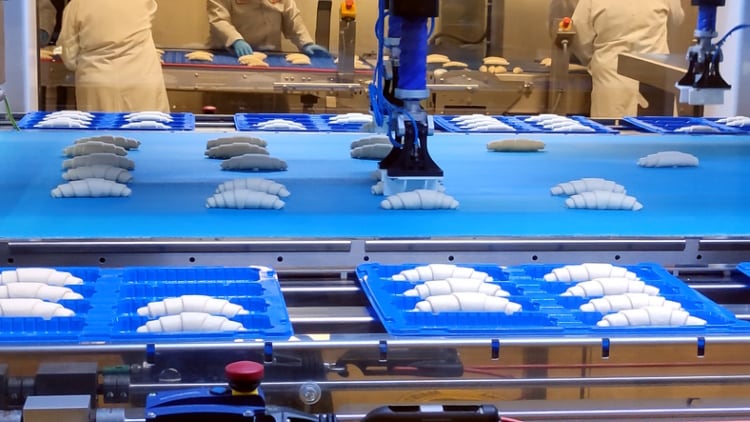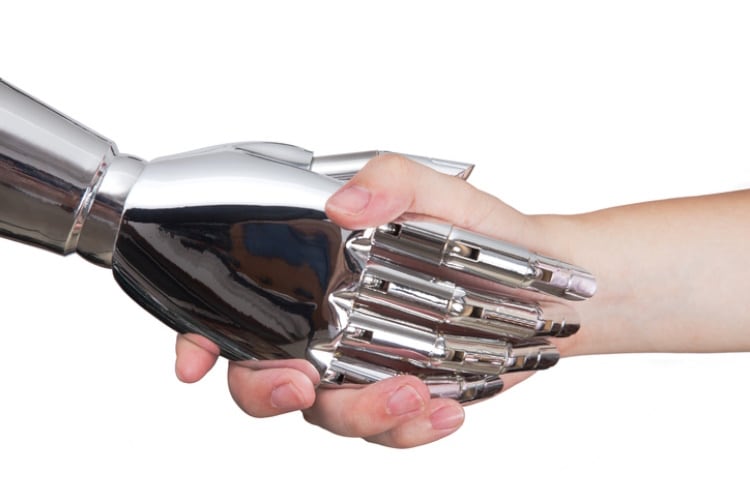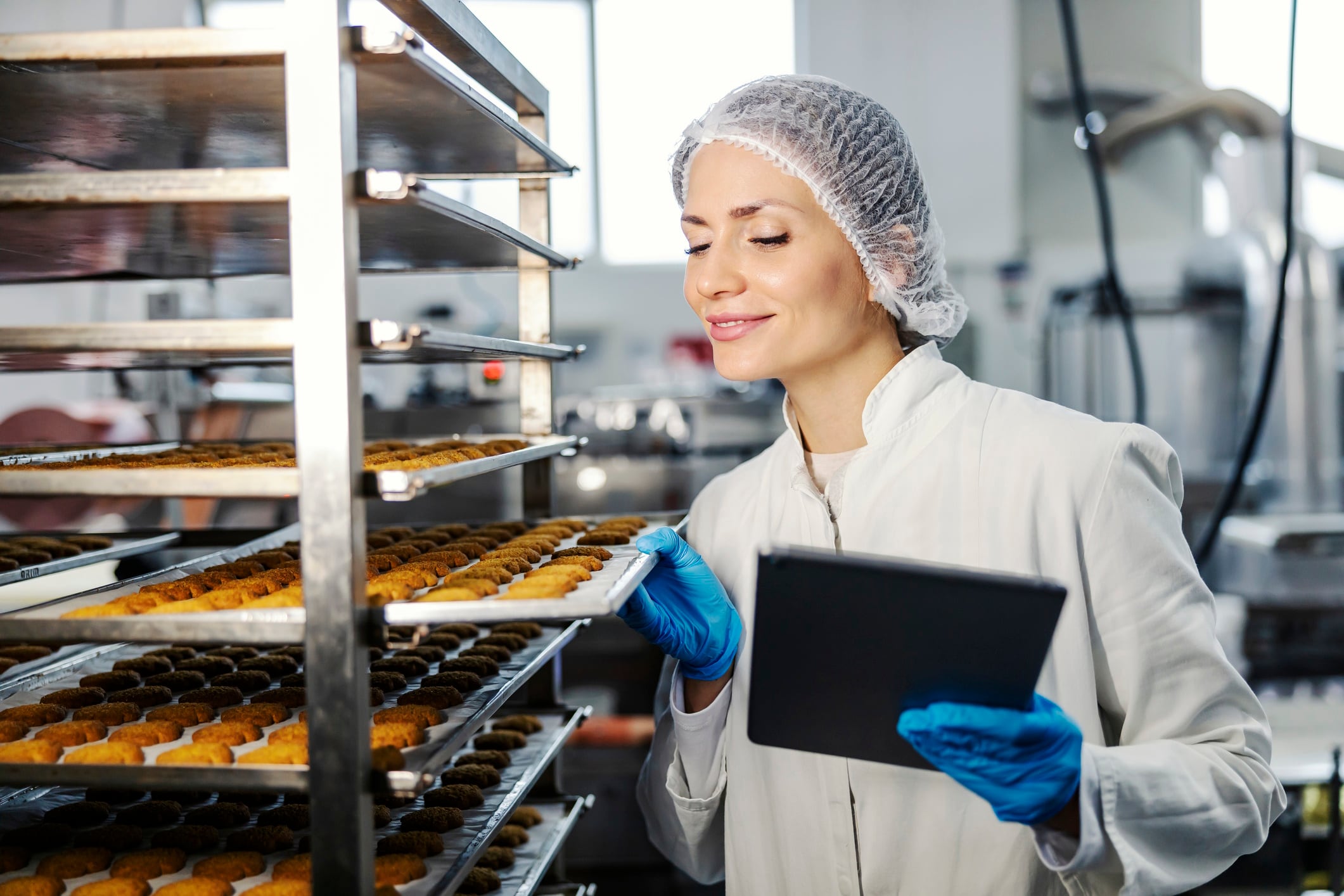Key takeaways:
- Hovis is rolling out one of the UK’s largest AI manufacturing projects to predict faults and cut downtime across its bakeries.
- Major food producers including Mars and PepsiCo are adopting similar AI-driven systems to improve reliability and reduce waste.
- As AI shifts from pilot projects to standard practice, food and snack manufacturers are learning to pair human expertise with real-time data insight.
Artificial intelligence is no longer confined to flavor forecasting or consumer analytics. Across the food sector, it’s moving onto the factory floor – and doing some serious heavy lifting.
The latest signal comes from Hovis, which has struck a major deal with Sheffield-based tech firm IntelliAM to install AI and smart-sensor systems across several sites. The partnership – described as one of the largest AI deployments in UK food manufacturing – expands an earlier pilot ninefold and aims to help engineers predict and prevent costly stoppages.
“We’re moving from reactive firefighting to foresight,” said Chris Lawton, head of engineering at Hovis. “A single stoppage on one line can ripple across our entire network. AI empowers our engineers, reduces pressure on the shop floor and ensures our customers can continue to rely on us every day.”
The shift comes at a pivotal moment for the 138-year-old UK brand. Hovis is in the process of being acquired by Associated British Foods, the owner of Kingsmill and Sunblest.
The £75 million deal will fold Hovis into ABF’s Allied Bakeries division, creating the UK’s biggest bread business. For ABF, inheriting a digitally upgraded network adds modern muscle to a traditionally low-margin category.
From downtime to data

Hovis’ rollout follows a wave of AI experimentation across global CPG operations. Mars has been testing predictive-quality systems in confectionery plants, while PepsiCo is turning to AI to shorten line changeovers and improve overall efficiency. Weetabix and Müller are also exploring real-time monitoring to reduce waste and unplanned maintenance.
It’s not about gimmicks, but about uptime. Machine-learning models can now process thousands of data points – from heat and vibration to air pressure – and detect subtle changes long before human operators would notice. For bakeries and snack producers running around the clock, that insight can be the difference between hitting delivery targets and losing a day’s output.
IntelliAM CEO Tom Clayton says the technology is changing the rhythm of production. “Real-time data gives engineers the confidence to act on evidence, not instinct. That shift from firefighting to foresight is what transforms performance,” he said.
Analysts say more manufacturers are taking notice. A 2024 McKinsey report found that more than 70% of global consumer-goods companies now use AI in at least one operational area – a sharp rise from the year before. Much of that investment is shifting from marketing toward core functions such as predictive maintenance, energy management and smarter scheduling.
Why bakery is becoming a proving ground

Bakeries make a natural testbed for AI. Production lines run hot, fast and tight on timing – even a small variation in temperature or speed can ruin a batch. Predictive maintenance offers a way to stabilize output without constant intervention. It’s also a hedge against labor shortages and rising energy costs, two of the industry’s biggest headaches.
“Bakery manufacturing has zero tolerance for downtime,” said Clayton. “If one line stops, you lose product, capacity and trust. AI takes guesswork out of that equation.”
Still, implementation is rarely straightforward. Many factories operate on decades-old equipment and fragmented data systems. Engineers and operators have long relied on instinct – the sound of a motor, the smell of a bake – and learning to trust digital signals can take time. The goal isn’t to replace that experience, but to augment it with faster, data-driven insight.
At IntelliAM’s recent Connected Performance Summit in Sheffield – where senior figures from Mars, PepsiCo and Diageo compared notes on automation – discussion centered on the practical side of AI. Attendees shared how predictive maintenance and connected data systems are helping them reduce waste, extend equipment life and ease pressure on production teams. What was once treated as a pilot project is now edging toward standard practice.
Quick check
What’s the true cost of an hour of downtime on your line?
Which assets would halt your site if they failed?
How quickly can you spot small deviations before they cause losses?
Are your operators using live data – or waiting for alarms?
Is AI still a pilot or already part of daily operations?
The next wave of automation isn’t about robots replacing people. It’s about pairing experience with data that spots problems early and keeps production steady.
For Hovis – soon to join the ABF family – it marks the start of a new chapter. The baker once known for its nostalgic ads is now showing that the future of bread lies not only in the recipe, but in the reliability of the machines that bake it. And it’s not alone. Across the world’s snack lines and dough rooms, AI is fast becoming the secret ingredient of modern manufacturing.





